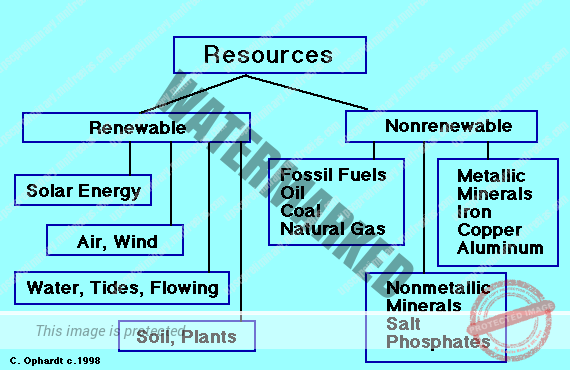- INTRODUCTION
- HISTORY OF OUR GLOBAL ENVIRONMENT
UNIT 3 – RESOURCES AND ITS UTILIZATION – PART 1
RESOURCES AND ITS UTILIZATION
Learning outcomes:
In this unit you will be able to learn the following:
- The different types of natural resources and its uses
- The consumption pattern of various resources like water, land fossil fuels etc.
- The energy scenario of the world and usage of renewable and non-renewable energy
- The over exploitation of these resources and the ill effects of such usage
- The strategies for efficient usage of natural resources
- To know about the sustainable resources and its governance for a sustainable future
INTRODUCTION
Our environment provides us with a variety of goods and services necessary for our day to day lives. These natural resources include, Air, Water, Soil, Minerals, along with the climate and solar energy.
Interactions between the abiotic aspects of nature and specific living organisms together form ecosystems of various types and habitats which provide various natural resources for the organisms to utilize and thrive upon. Many of these living organisms are used as our food resources.
These resources are classified as renewable and non-renewable based on their capacity to replenish naturally over time and be as a continuous source for consumption.
- RENEWABLE RESOURCES –they are resources which are naturally replenished over time and remain as a constant source of energy. For e.g. the solar energy is a constant heat and light energy, the water also due to its hydrological nature is a replenishing energy resource.
- NON-RENEWABLE ENERGY – These are minerals that have been formed in the lithosphere over millions of years and constitute a closed system. These non-renewable resources, once used, remain on earth in a different form and, unless recycled, become waste material.
Non-renewable resources include fossil fuels such as oil and coal, which if extracted at the present rate, will soon be totally used up. The end products of fossil fuels are in the form of heat and mechanical energy and chemical com- pounds, which cannot be reconstituted as a resource.
HISTORY OF OUR GLOBAL ENVIRONMENT:
About ten thousand years ago, when mankind changed from a hunter-gatherer, living in wilderness areas such as forests and grasslands, into an agriculturalist and pastoralist, we began to change the environment to suit our own requirements. As our ability to grow food and use domestic animals grew, these ‘natural’ ecosystems were developed into agricultural land depending extensively on Rain, Streams And Rivers For Water.
Later they began to use wells to tap underground water sources and to impound water and created irrigated land by building dams. Recently we began to use fertilizers and pesticides to further boost the production of food from the same amount of land.
However we now realize that all this has led to several undesirable changes in our environment. Mankind has been overusing and depleting natural resources. The over-intensive use of land has been found to exhaust the capability of the ecosystem to support the growing demands of more and more people, all requiring more intensive use of resources.
Industrial Growth, Urbanisation, Population Growth and the enormous increase in the use of consumer goods, have all put further stresses on the environment. They create great quantities of solid waste. Pollution of air, water and soil has begun to seriously affect human health.

